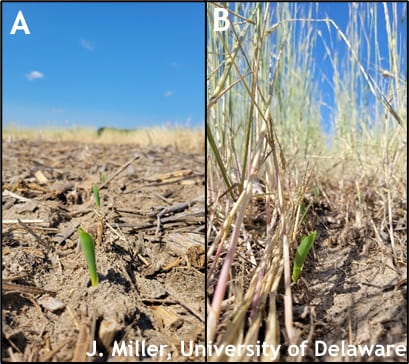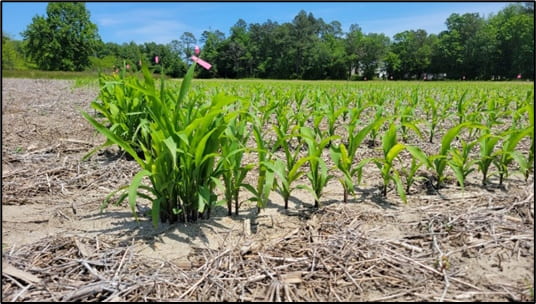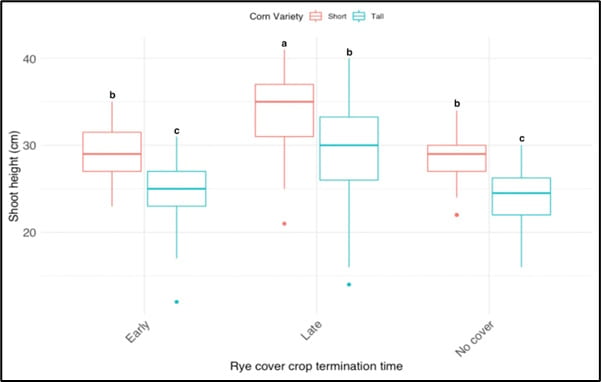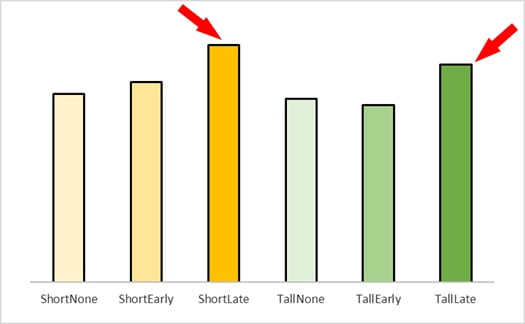Jarrod O. Miller, Extension Agronomist, jarrod@udel.edu, Alyssa Koehler, Extension Field Crops Pathologist; akoehler@udel.edu, Isabell Emanuel (iemanuel@udel.edu , Postdoctoral Scholar)
Later termination of cover crops allows for greater residue, which should support weed suppression and organic matter building (Figure 1). However, planting into greater residue can lead to stand issues and slug damage. There have been observations that corn appears to do better when planted “green” into rye, possibly being taller than in other fields.
This can be related to the shade response that plants exhibit, where they sense nearby plants absorbing sunlight and attempt to “outgrow” their competition. This works well when weeds are present, but plants are not discerning. In Figure 2, you can observe closely planted corn seed responding and attempting to outgrow itself.
Could this also be happening with cover crops? In a study at the Carvel Research and Education Center we are observing both short and traditional stature (height) corn planted into no-cover, early terminated, and late terminated rye. Early-stage vegetative corn heights were greater for short corn varieties, particularly when planted into later terminated rye cover crops (Figure 3). Traditional tall corn had the shortest shoot length in early terminated and no-cover plots.
As corn growth continued to the VT stage, heights between short and traditional corn became similar, but had higher “greenness” (Figure 3) when planted into late terminated cover crops (Figure 1b). Past UD studies of corn into late terminated rye observed decreased yields due to stand issues, so these height differences may not actually affect yield. We will know better this fall when we harvest these plots and can determine whether the additional early summer heights make a difference in corn yield.

Figure 1: a) Corn emerging in a no-cover plot and b) corn emerging within a late terminated rye plot.

Figure 2: Corn at the end of the row planted too close together.

Figure 3: Corn greenness as measured by a drone (NDVI), where short and tall corn are both greener when planted into later terminated rye.

Figure 4: Corn “greenness” as measured by a drone (NDVI), where short and tall corn are both greener when planted into later terminated rye.
